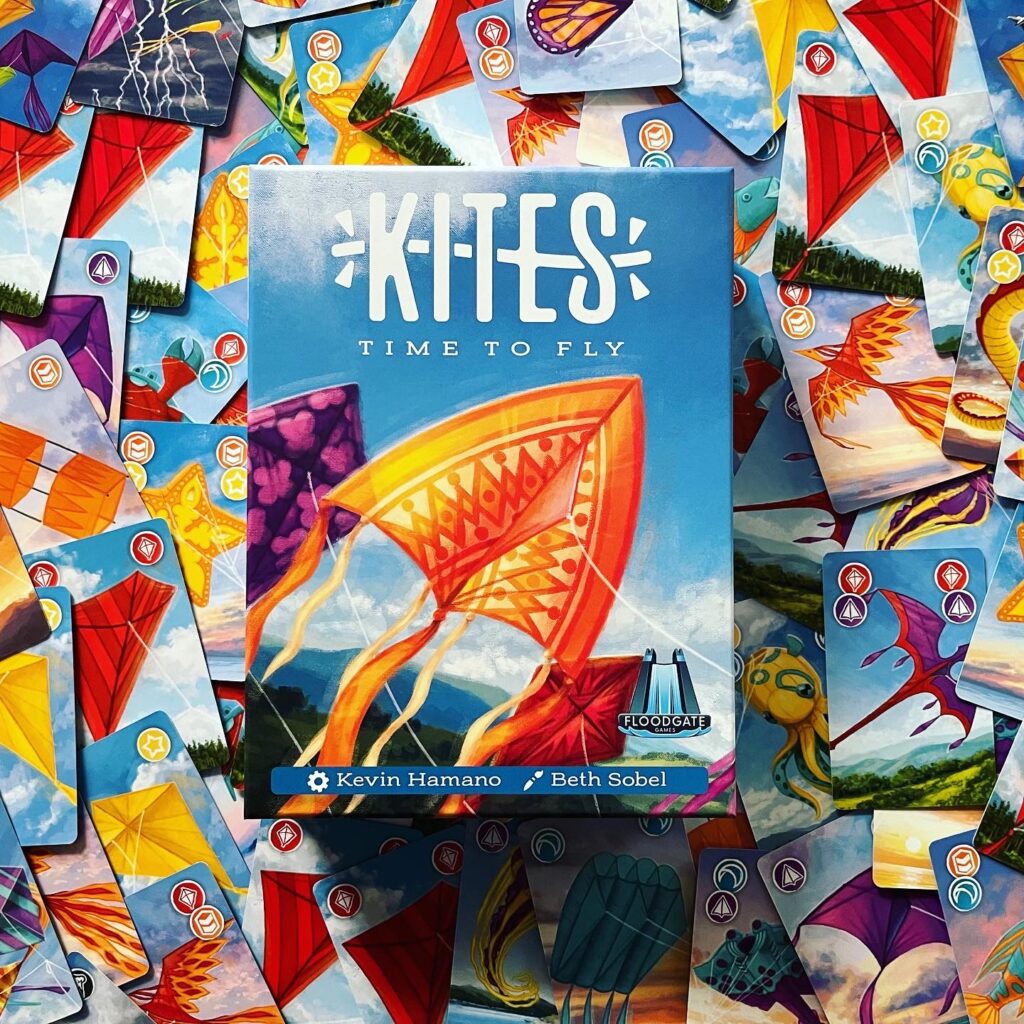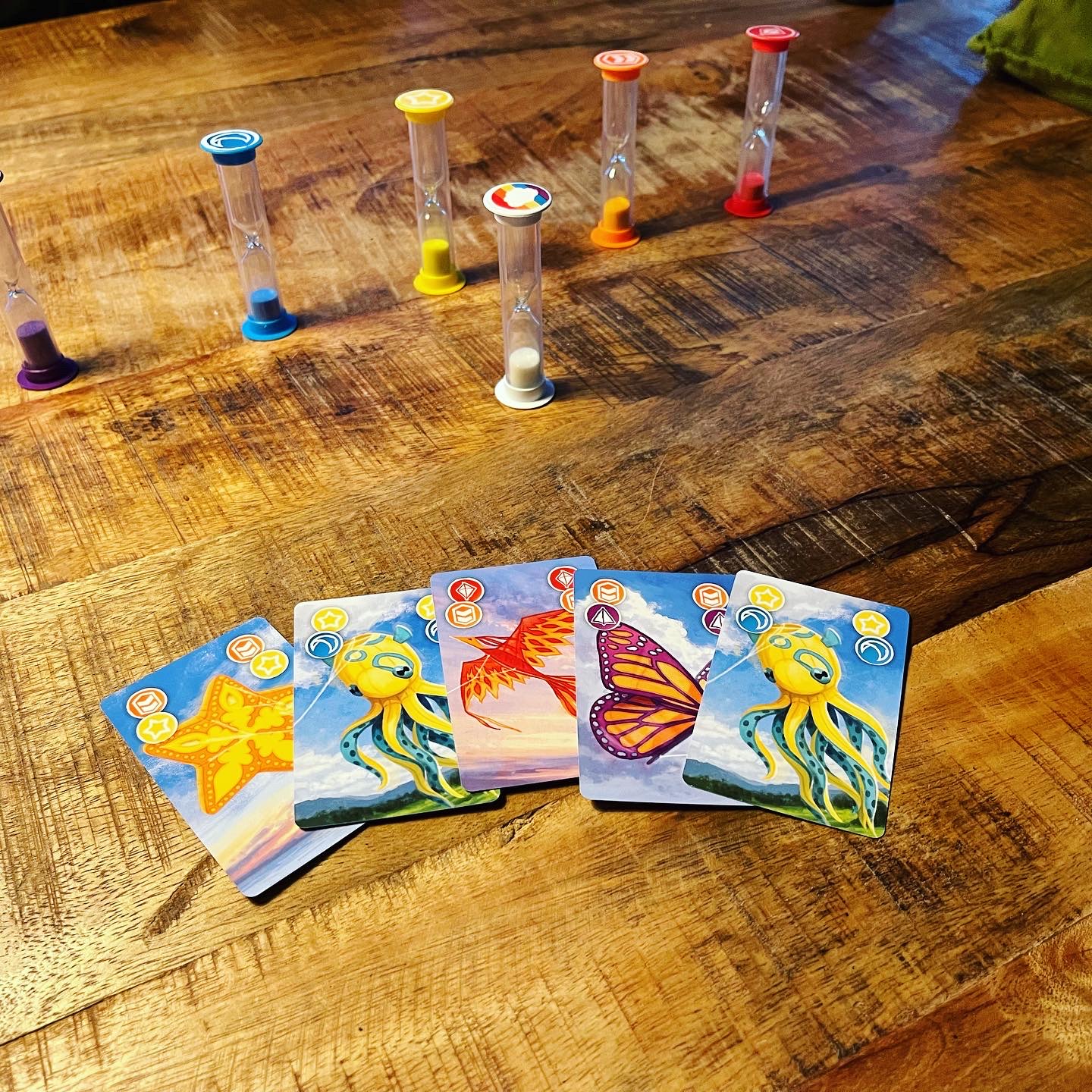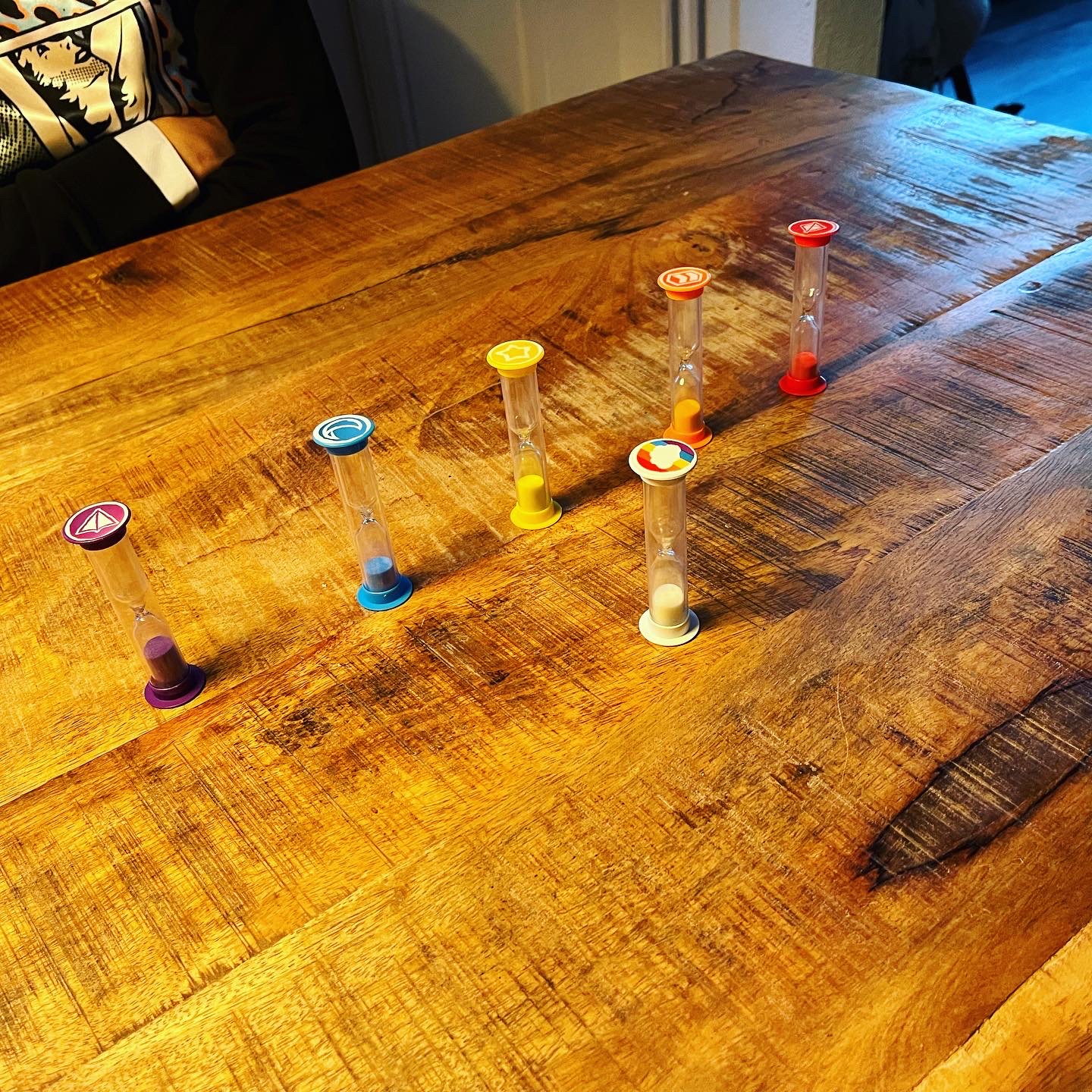Do people still fly kites these days? I can remember that I used to go kite flying quite regularly as a kid. On a sunny and relatively windy day, I would join my father and we would go to a field near our house bringing a kite. A kite that in hindsight might’ve been bit too professional compared to our lack of kite skills. During holidays, we even went kite flying on the beach: the perfect location for this breezy activity. I miss seeing colourful kites up high in the sky…. Similar to fishing not a lot happens but when something does happen, it is instantly exciting. Kite flying is above all a relaxing activity. At least in real life, in Kites it is a very stressful but also extremely entertaining activity where anything can go wrong. Will you keep all the kites up in the air or will your airy hopes come crashing down?

Kites was a real frequent-flyer during Spiel and the game sold out fairly quickly during the convention. This small colourful and cheerful card game managed to win the hearts of many a fairgoer including yours truly. Kites probably attracted attention because of the sentiment for a good session of kite flying. In Kites, all players work together to keep the kites – represented by a set of colourful hourglasses – in the air. Players take turns playing cards, then flip the corresponding hourglasses and must communicate well with the other players to ensure that no kite comes crashing down.
Players place six hourglasses in different colours and with different times on the table: white (60 seconds), purple (90 seconds), blue (75 seconds), yellow (60 seconds), orange (45 seconds) and red (30 seconds). That red kite is a very temperamental kite and that purple kite must have her heads in the cloud to stay in the air for so long. Players are dealt some cards and the white hourglass is turned over.
Players start turning over the hourglasses on the table by playing their cards. If a player plays a card with a single colour, they may choose between the hourglass (kite) in that particular colour or the white kite. By playing a card with two colours, players must turn over both hourglasses in that colour. During a turn, a player plays a card, flips over the corresponding hourglass or hourglasses and draws a new card. Once the draw pile is emptied, players are no longer allowed to turn over the white hourglass. This ensures some extra stress. If players have played all cards, they have won and otherwise they get a score depending on the amount of remaining cards in their hands and the drawpile.


Kites’ strategy consists mainly of planning and good communication. Players must turn over the right hourglasses at the right times. Sometimes it can be beneficial to wait before flipping an hourglass. Players must also play the right combinations of colours as well. There is no point in flipping the purple hourglass if it has just been flipped, while at the same time the red hourglass is almost running out of sand. For an extra challenge, players can also add ‘events’ to the draw pile. During a storm, all hourglasses must be flipped, if the ropes of the kites become entangled, players must exchange cards, and if a plane flies over, players can no longer communicate, as they can no longer understand each other.
Kites is an extremely simple game concept that feels very innovative at the same time. This combination makes Kites a hugely entertaining cooperative challenge.



